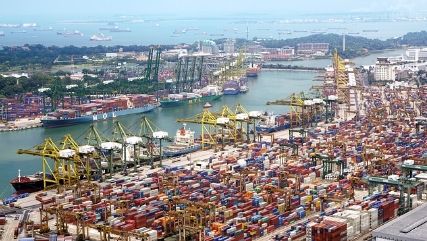Customs Clearance: What it means and the process
What is Customs Clearance?
Customs clearance is a pivotal process in international trade, essential for ensuring the smooth movement of goods across borders. It involves the submission of necessary documents and the payment of duties and taxes to the customs authorities of a particular country. The purpose of customs clearance is to verify the legality, accuracy, and compliance of imported or exported goods with the respective country's regulations.

The Process of Customs Clearance
INSPECTION OF DOCUMENTS
When shipments arrive at a port of entry in the United States, they are subject to inspection by U.S. Customs and Border Protection (CBP). During this process, officers from the government agency, CBP, inspect the documents associated with the shipment to ensure that all required information is present and accurate.
The most common documents required for clearance are:
Proof of insurance
Invoice (unless a commercial sample is worth less than $25)
Port spending (when applicable)
A packing list
Certificate of origin (when applicable)
Air waybill, inland bill of lading, through bill of lading, and ocean bill of lading
Pre-shipment inspection certificate (when applicable)
Transportation invoice
The process of customs clearance typically involves several key steps:
1. Documentation Submission: Importers or exporters are required to submit various documents to the customs authorities. These documents usually include commercial invoices, packing lists, bills of lading, certificates of origin, and any other specific documents required by the importing country's regulations.
2. Customs Declaration: Upon receiving the necessary documents, importers or their customs brokers must declare the details of the goods being imported or exported. This declaration includes information such as the nature of the goods, their value, quantity, weight, and country of origin.
3. Customs Inspection: Customs authorities may conduct inspections to verify the accuracy of the declaration and ensure that the goods comply with relevant laws and regulations. Inspections may involve physical examination of the goods, verification of documents, and, in some cases, laboratory testing.
4. Duty and Tax Assessment: Customs officials assess the applicable duties, taxes, and fees based on the declared value and classification of the goods. Import duties, value-added tax (VAT), excise duties, and other charges may apply depending on the nature of the goods and the trade agreements between countries.
5. Payment of Duties and Taxes: Importers are required to pay the assessed duties and taxes before the goods can be released from customs custody. Payment methods vary by country but commonly include bank transfers, electronic funds transfer, or payment at designated customs offices.
6. Release of Goods: Once all necessary formalities are completed and payments are made, customs authorities issue a customs clearance certificate or release order, allowing the goods to be released for further transportation or delivery to the importer's premises.
Duration of Customs Clearance
The time taken for customs clearance can vary significantly depending on various factors, including the complexity of the shipment, the accuracy and completeness of documentation, the efficiency of customs procedures, and any delays caused by inspections or administrative issues. In some cases, customs clearance can be completed within a few hours, while in others, it may take several days or even weeks, particularly for goods subject to stringent regulations or inspections.
Related articles

 WeChat of CBiBank
WeChat of CBiBank